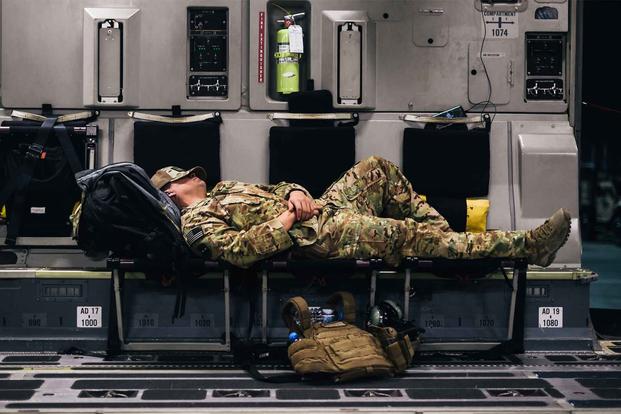Whether you call it overtraining, under-recovery or just stressed out, the human body and mind must rest to perform at its best. It does not matter if you are the toughest on the planet both physically and mentally or completely new to starting a fitness routine, actively pursuing recovery should be part of your training program.
Here is a list of ways to heal, recover, rebuild, de-stress and come back stronger physically, mentally, even spiritually:
1. Sleep. A good night's sleep is the best recovery tool we have. Sometimes due to circumstances beyond our control, we cannot get a full night's sleep (7-8 hours). If you focus on other ways to recover (below), you still can perform at needed levels even with reduced sleep. But over time, lack of sleep will win the recovery battle, and you will lose.
2. Favorite location. Many people find relaxation at a favorite place like the ocean, mountains, tree stand or fishing on a lake. Sometimes, just getting away, unplugging our lives from the world and enjoying life outside can bring the mind, body and spirit back to normal. Even a quick walk outside during lunch for 15 minutes can be a successful way to "reset" our mind and body for more stressful work the rest of the day.
3. Refocusing the brain. A long, slow distance run, ruck, or swim can be a good way to "get away" and mix in a little physical activity as well, if desired. Sometimes these activities can allow the brain to refocus and develop great ideas where you were previously stuck with a dilemma or problem you could not figure out.
4. Foam roller and stretching. Sometimes the body aches, or hard living or hard training affect other areas of your life. To help reduce the pains of minor aches and pains, take 15 minutes to warm up and stretch from head to toe, and add in some foam rolling. Taking a yoga class is always a great option if stretching and rolling resonate with you and your body. See related video.
5. Hot tub, lax ball and a good book. If you can get into a hot bathtub or hot tub and spend 30 minutes relaxing, reading a book or just alone with your thoughts, you can help the body heal as well as the mind. Adding a lacrosse ball to extra sore spots while in the tub is a way to take the foam rolling option to the next level. See myofascial release.
6. Long bike ride and stretch. If you are banged up from running or rucking and need a non-impact option to loosen up, biking is a great option for the legs. Add in some yoga-based stretching after a 30-plus-minute ride. Other options like elliptical, rowing and swimming can help sore joints and muscles.
7. Dynamic stretching (land and sea). Do all the dynamic stretches you normally do before working out or running (butt kickers, leg swings, Frankenstein walks, high knees, side steps, etc.), and then repeat all of them in the pool in chest-deep water. Treading water with just your legs, performing aqua-jogging and moving with full range of motion in your hips and legs can help if you're getting burned out from high miles of running from a running cycle progression. See related article.
8. Nutrition and recovery supplementation. There is nothing like eating well to help the body regain the fuel, vitamins, minerals and general nutrients. You cannot go wrong with fruits, vegetables, lean proteins, healthy fats from fish and nuts, and even supplementing protein powder if you are burning the candle at both ends. See related article.
9. Hydration and electrolytes. Being dehydrated can wipe you out completely, as can not having enough electrolytes coming in after a hot workout. Adding salts like sodium, potassium and magnesium, as well as antioxidants like beta-carotene, Vitamin C and turmeric, can help the body recover and have anti-inflammatory effects. See related article.
10. Naps. A short nap as little as 10-15 minutes can do wonders for improving alertness and general lethargy. However, try a nappuccino. Yes, adding some caffeine minutes before putting your head on a pillow can add to the nap response. Just as the caffeine kicks in, you have finished your 10-15 minutes nap, and bam! You are ready to go.
Note: if you ever feel like your sleep is poor, consider taking a sleep study. You may find an alarming number of times you are waking yourself through the night snoring or having vivid dreams. Some sleep studies show people wake themselves hundreds of times in a night's "sleep."
Stew Smith is a former Navy SEAL and fitness author certified as a Strength and Conditioning Specialist (CSCS) with the National Strength and Conditioning Association. Visit his Fitness eBook store if you’re looking to start a workout program to create a healthy lifestyle. Send your fitness questions to stew@stewsmith.com.
Want to Learn More About Military Life?
Whether you're thinking of joining the military, looking for fitness and basic training tips, or keeping up with military life and benefits, Military.com has you covered. Subscribe to Military.com to have military news, updates and resources delivered directly to your inbox.



















